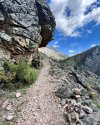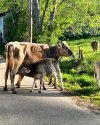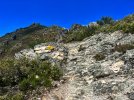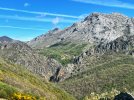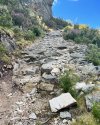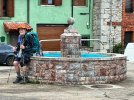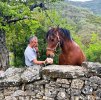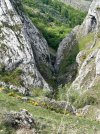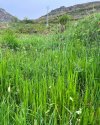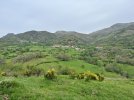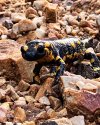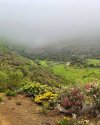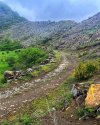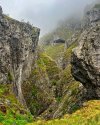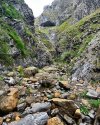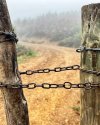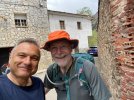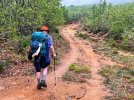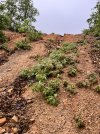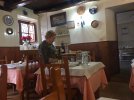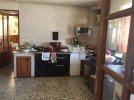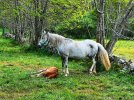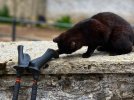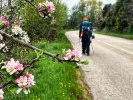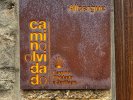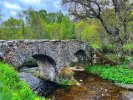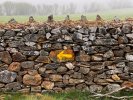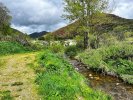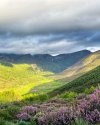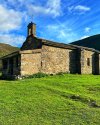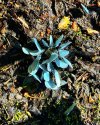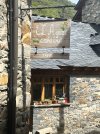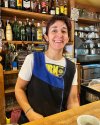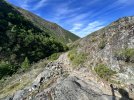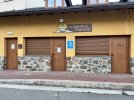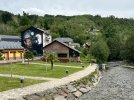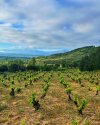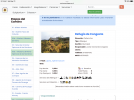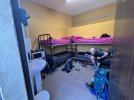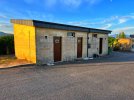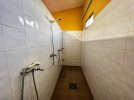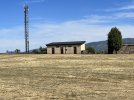@QuailHiker and I made it to Santiago via the the Camino Invierno route on May 31. Now that we have had time to reflect we thought it might help to share our views on the nine days we spent on the Camino Olvidado. I started on May 11 from Cistierna to Bonar, hooking up with him there. We walked the rest of the way together to Ponferrada, where we joined the Camino Invierno.
Background and perspective—Thanks to COVID our plan was delayed for two years. By the time 2022 came around and we could actually go, I was 75 and
@QuailHiker was 71. This was my 4th Camino (Frances, Norte, and Primitivo); and it was his third Camino (Frances, and Norte/Primitivo.) By most standards I think that qualifies us as experienced pilgrims, but also ones that have admittedly begun to hit their declining years physically. My Spanish is limited to three years of high school and my previous visits to Spain. @QuailhHiker’s Spanish is better than mine, but not what anyone would consider fluent.
Resources—We relied primarily on the official Camino Olvidado app, the
Wise Pilgrim app, Ender’s Guide in English (which is available on the Forum), and the “detailed planning thread” published by Peregrina 2000 on the Forum. Additional information is available on gronze.com; and rayyrosa.com provides links to Wikilocs tracks for each stage, including the alternate stages.
Profile of “ideal” pilgrim—We estimate that less than 10% of pilgrims we have met on the
Camino Frances should consider this route. The “ideal” profile is someone who is physically fit, has backpacking experience, is fluent in Spanish, has already walked one or more of the other routes that are more physically demanding than the
Camino Frances, and is fine with limited social interaction. Given the remoteness, we think it’s better if it’s walked with at least one other pilgrim.
Infrastructure—a. Overall we found the route to be well-signed. One exception was the Los Calderones Gorge (Stage 15B), where I suspect no yellow arrows are allowed. When it looks like the trail has ended, simply continue to follow the dry river bed through the large rocks.
b.) Lodging—This is one of the tricky parts. We recommend booking ahead at least a day or two—another reason why Spanish proficiency is a big plus. Many of the towns have no albergues, no pensions, no restaurants, and no tiendas. We were always the only pilgrims in every albergue we stayed in. Some were a little primitive, but some were surprisingly nice; and all were well-maintained. The new albergue in La Magdalena, as an example, is superb!
c,) Food—Most stages have no food available in the towns between your daily starting point and the end point. There is generally no breakfast available at the beginning of the day either. At one point we went six straight days without coffee. Most towns did have somewhere to eat for dinner. The exception is Fasgar, where you need to bring food for dinner that can be bought at the VERY small tienda as you enter Riello. A few of the dinners were quite outstanding. And
@QuailHiker raves that the ensalada he had in Colinas del Campo is the best he’s ever had!
d.) Cell coverage and WiFi—Most of the time we had service, but there were times during the day where there was no cell service and times in the evening where there was no WiFi.
5. The people—The local population was almost universally kind and supportive. Pilgrims are still rare and appreciated, and our experience was extremely positive. If we had been more fluent in Spanish, I’m sure it would have created even more memorable experiences. By pure coincidence,
@QuailHiker met Ender in Cinerna and had a wonderful interaction.
6. Degree of difficulty—We were fortunate to have almost universally decent weather. For a couple of ageing geezers, I think it’s fair to say there were certain days that were a bit harder than anything we experienced on the Norte or Primitivo. For someone who is strong and under 65, this is probably less of an issue. I would work hard on keeping my backpack weight down because there will be days where you’ll need lots of water and extra food. The mountain alternative out of Bonar provides three of the more difficult days but also some of the most spectacular scenery. It’s arguably the most remarkable three-day stretch of any Camino we’ve experienced. The one thing we decided to skip was the very steep descent out of Villar because it was described as “almost sheer” in Wse Pilgrim. Given our ages and the difficult challenge of the previous day, we decided in fact to try to be “wise pilgrims.”
7. Overall—The Camino Olvidado provides an alternative route that is unique in our experience. To have days where the scenery is terrific, the landscape is unspoiled, there is no graffiti, and you have it all to yourself is a hard thing to find these days. For us, it tested our limits and we each had a day or two when we were completely depleted at day’s end. At the same time, we feel extremely fortunate and grateful that we were able to experience this very unique Camino route.
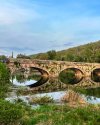 3753D35E-C5AC-413E-973C-596761A9041E.jpeg766.7 KB · Views: 111
3753D35E-C5AC-413E-973C-596761A9041E.jpeg766.7 KB · Views: 111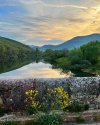 E9CF7F6C-E0C7-456E-9F70-4DD41126E770.jpeg817 KB · Views: 76
E9CF7F6C-E0C7-456E-9F70-4DD41126E770.jpeg817 KB · Views: 76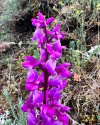 385C8277-00E8-402E-BC58-9B9B2290B5B0.jpeg793.2 KB · Views: 54
385C8277-00E8-402E-BC58-9B9B2290B5B0.jpeg793.2 KB · Views: 54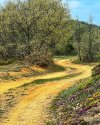 A188F244-55FF-4690-9749-D483EDE407B0.jpeg1.4 MB · Views: 52
A188F244-55FF-4690-9749-D483EDE407B0.jpeg1.4 MB · Views: 52 74F6F212-F64B-4518-A552-1D8CC06565C1.jpeg415.2 KB · Views: 53
74F6F212-F64B-4518-A552-1D8CC06565C1.jpeg415.2 KB · Views: 53



